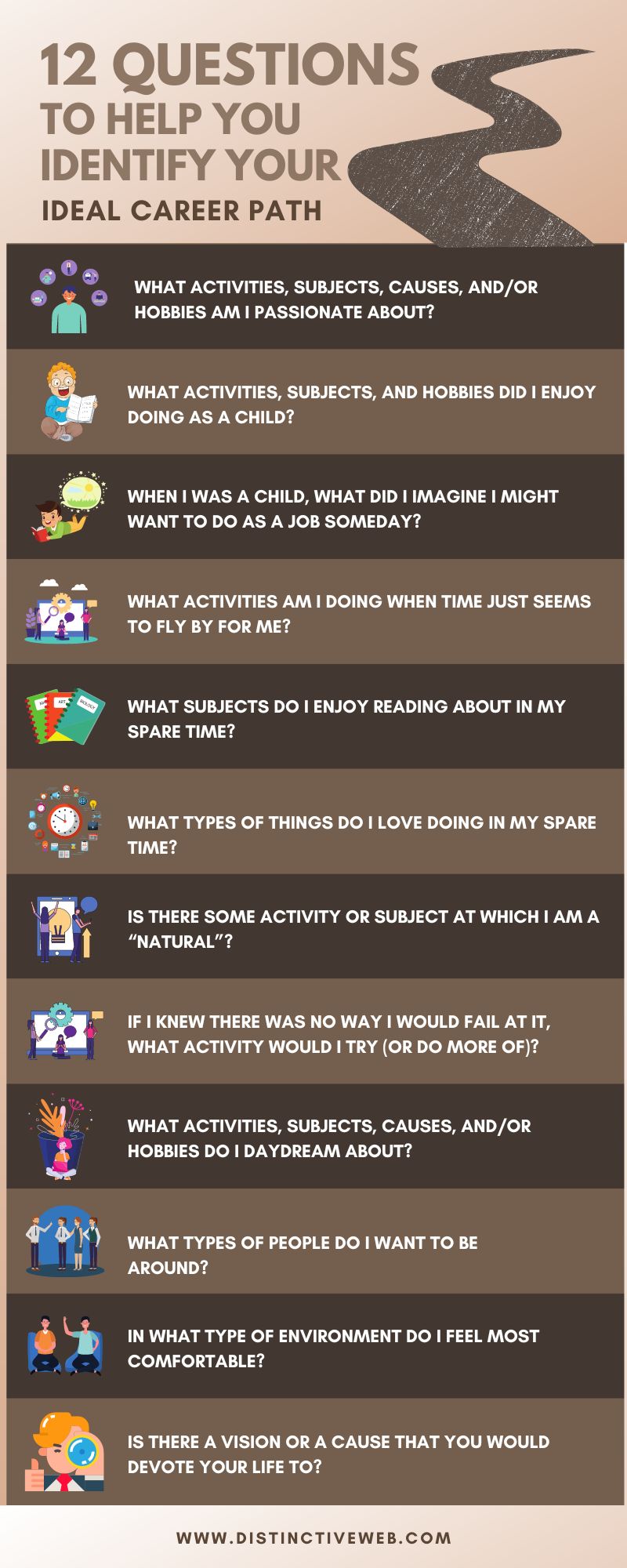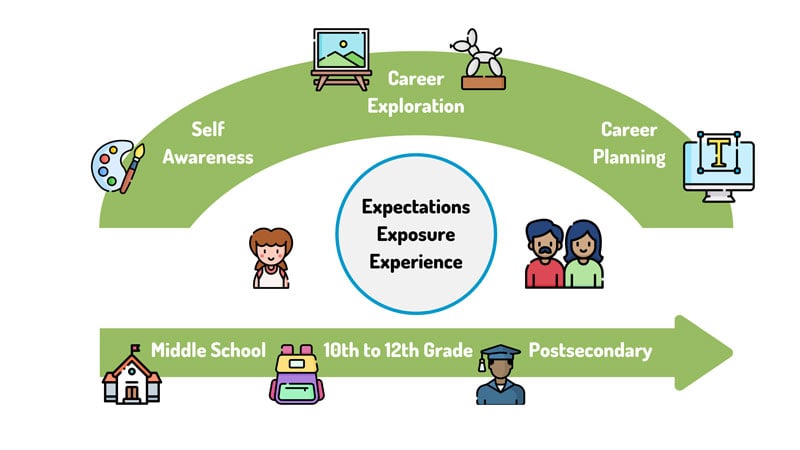Defining your role and career path is a critical step toward achieving professional fulfillment and long-term success. In today’s dynamic work environment, clarity about your responsibilities, strengths, and aspirations can help you navigate challenges and seize opportunities. Whether you’re just starting out or looking to pivot in your career, understanding how to align your skills with your goals is essential. This article explores practical strategies to better define your role, identify your career trajectory, and take actionable steps toward growth. By reflecting on your values, seeking feedback, and setting clear objectives, you can create a roadmap tailored to your unique professional journey.
https://youtube.com/watch?v=JGUMyUwWb-8
See Also I Just Got a Job as a Marketing Coordinator. I Do Not Know Where to Start.
I Just Got a Job as a Marketing Coordinator. I Do Not Know Where to Start.How Can I Better Define My Role and Career Path?
Defining your role and career path is a critical step toward achieving professional satisfaction and success. It involves understanding your strengths, interests, and long-term goals, as well as aligning them with the opportunities available in your industry. By taking a proactive approach, you can create a clear roadmap that guides your decisions and helps you navigate challenges effectively.
1. Assess Your Skills and Interests
To define your role and career path, start by conducting a thorough self-assessment. Identify your strengths, weaknesses, and areas where you excel. Consider what tasks or projects energize you and align with your passions. Tools like SWOT analysis or personality assessments can provide valuable insights into your professional preferences and potential career directions.
See Also How Do You Effectively Send Mass Emails Without Being Marked as Spam?
How Do You Effectively Send Mass Emails Without Being Marked as Spam?| Step | Action |
|---|---|
| 1 | List your core skills and competencies. |
| 2 | Identify activities that bring you fulfillment. |
| 3 | Use assessment tools to gain deeper insights. |
2. Set Clear Career Goals
Establishing specific, measurable, achievable, relevant, and time-bound (SMART) goals is essential for defining your career path. Break down your long-term aspirations into smaller, actionable steps. For example, if your goal is to become a team leader, identify the skills and experiences required to achieve that position.
| Goal Type | Example |
|---|---|
| Short-term | Complete a certification in project management. |
| Long-term | Attain a leadership role within five years. |
3. Seek Feedback and Mentorship
Engage with colleagues, supervisors, or mentors to gain external perspectives on your performance and potential. Constructive feedback can help you identify blind spots and areas for improvement. A mentor can provide guidance, share their experiences, and help you navigate challenges in your career journey.
See Also Marketing professionals: What advanced your career the most?
Marketing professionals: What advanced your career the most?| Action | Benefit |
|---|---|
| Request feedback regularly. | Identify areas for growth. |
| Find a mentor in your field. | Gain insights and advice from experienced professionals. |
4. Explore Industry Trends and Opportunities
Stay informed about the latest trends and developments in your industry. Research emerging roles, technologies, and skills that are in demand. This knowledge can help you align your career path with future opportunities and ensure you remain competitive in the job market.
| Resource | Purpose |
|---|---|
| Industry reports | Understand market trends. |
| Professional networks | Learn about new opportunities. |
5. Continuously Develop Your Skills
Invest in your professional growth by pursuing training, certifications, or advanced education. Focus on acquiring skills that are relevant to your desired role and industry. Continuous learning not only enhances your expertise but also demonstrates your commitment to personal and professional development.
See Also Marketers, What's Your Side Hustle (or What Would It Be)?
Marketers, What's Your Side Hustle (or What Would It Be)?| Skill Development | Outcome |
|---|---|
| Attend workshops and seminars. | Stay updated on industry best practices. |
| Pursue online courses. | Gain new competencies at your own pace. |
How do I define my career path?
![]()
1. Assess Your Interests and Passions
To define your career path, start by evaluating your interests and passions. Consider what activities or subjects excite you and align with your natural talents. Reflect on past experiences, hobbies, or projects that brought you satisfaction. This step helps you identify fields or industries that resonate with your personal and professional aspirations.
- List your hobbies and activities that you enjoy.
- Identify skills or tasks you excel at naturally.
- Reflect on moments when you felt most fulfilled in your work or studies.
2. Evaluate Your Skills and Strengths
Understanding your skills and strengths is crucial for defining a career path. Take inventory of both hard skills (technical abilities) and soft skills (communication, leadership, etc.). Consider seeking feedback from mentors, colleagues, or supervisors to gain an objective perspective on your capabilities.
- Create a list of your technical and interpersonal skills.
- Seek feedback from others to identify strengths you may overlook.
- Match your skills to potential career roles or industries.
3. Research Potential Career Options
Once you have a clear understanding of your interests and skills, research potential career options. Explore industries, job roles, and companies that align with your goals. Use online resources, attend career fairs, or conduct informational interviews to gather insights about different career paths.
- Explore job descriptions and requirements in your areas of interest.
- Network with professionals in fields you are considering.
- Analyze growth opportunities and industry trends.
4. Set Clear Career Goals
Defining your career path requires setting clear and achievable goals. Break down your long-term aspirations into short-term objectives. For example, if your goal is to become a manager, identify the steps needed to gain the necessary experience and qualifications.
- Define your long-term career vision.
- Break it down into smaller, actionable steps.
- Track your progress and adjust your goals as needed.
5. Seek Guidance and Mentorship
Seeking guidance from mentors or career coaches can provide valuable insights and direction. A mentor can help you navigate challenges, offer advice, and share their experiences to help you make informed decisions about your career path.
- Identify potential mentors within your network or industry.
- Ask for advice on career decisions and skill development.
- Leverage their experience to avoid common pitfalls and accelerate your growth.
What is your ideal role and career pathway?

Defining the Ideal Role
My ideal role would be one that aligns with my passions, skills, and values. This role would allow me to contribute meaningfully to a team or organization while also providing opportunities for personal growth and professional development. Key aspects of this role include:
- Creative Freedom: The ability to innovate and bring new ideas to the table.
- Collaboration: Working with a diverse team to achieve common goals.
- Impact: Making a tangible difference in the organization or community.
Career Pathway Exploration
My career pathway would involve a series of strategic steps to achieve long-term success. This pathway would be marked by continuous learning and adaptability. Key elements include:
- Education and Training: Pursuing relevant certifications and advanced degrees.
- Networking: Building relationships with industry professionals and mentors.
- Experience: Gaining hands-on experience through internships, projects, and roles that challenge me.
Skills and Competencies
To excel in my ideal role, I would focus on developing a robust set of skills and competencies. These would include both technical and soft skills that are essential for success in my chosen field. Key areas of focus are:
- Technical Proficiency: Mastering the tools and technologies relevant to my industry.
- Communication: Enhancing my ability to convey ideas clearly and effectively.
- Problem-Solving: Developing strategies to tackle complex challenges.
Work Environment Preferences
The ideal work environment for me would be one that fosters creativity, collaboration, and innovation. It would be a place where I feel valued and supported in my professional endeavors. Key characteristics include:
- Supportive Culture: A workplace that encourages open communication and mutual respect.
- Flexibility: Opportunities for remote work or flexible hours to maintain work-life balance.
- Growth Opportunities: Access to resources and programs that promote career advancement.
Long-Term Career Goals
My long-term career goals are centered around achieving leadership roles and making a significant impact in my field. These goals are designed to ensure sustained growth and fulfillment. Key objectives include:
- Leadership Development: Taking on roles that allow me to lead and inspire teams.
- Industry Recognition: Gaining recognition as an expert in my field through publications and speaking engagements.
- Mentorship: Giving back by mentoring the next generation of professionals.
How to identify your career path?

1. Assess Your Interests and Passions
Identifying your career path begins with understanding your interests and passions. Reflect on activities or subjects that excite you and consider how they align with potential careers. Ask yourself:
- What topics or activities do I enjoy in my free time?
- What subjects or tasks make me lose track of time?
- Are there any causes or industries I feel strongly about?
2. Evaluate Your Skills and Strengths
Understanding your skills and strengths is crucial in determining a suitable career path. Take inventory of your abilities, both hard and soft skills, and consider how they can be applied professionally. Ask yourself:
- What am I naturally good at?
- What skills have I developed through education or experience?
- What tasks do others often compliment me on?
3. Research Potential Career Options
Once you have a sense of your interests and skills, research career options that align with them. Explore job descriptions, required qualifications, and growth opportunities in fields that interest you. Consider:
- What industries or roles match my interests and skills?
- What are the day-to-day responsibilities of these roles?
- What is the job outlook and earning potential for these careers?
4. Seek Guidance and Mentorship
Connecting with professionals in your desired field can provide valuable insights and guidance. Seek out mentors, attend networking events, or conduct informational interviews to learn more about potential career paths. Ask yourself:
- Who do I know in my desired industry?
- What questions should I ask to gain a deeper understanding of the field?
- How can I build relationships with experienced professionals?
5. Experiment and Gain Experience
Gaining hands-on experience through internships, volunteer work, or part-time jobs can help you test the waters and confirm your career choice. Experimenting allows you to see if a particular path aligns with your expectations. Consider:
- What opportunities are available to gain experience in my desired field?
- How can I apply my skills in a real-world setting?
- What lessons can I learn from these experiences to refine my career goals?
How would you describe your career path answer?

How to Structure Your Career Path Answer
When describing your career path, it is essential to structure your response in a way that highlights your key achievements, professional growth, and future aspirations. Here’s how you can do it effectively:
- Start with your background: Briefly mention your education and early career experiences.
- Highlight milestones: Focus on significant roles, promotions, or projects that shaped your career.
- Emphasize skills and expertise: Discuss the skills you’ve developed and how they align with your career goals.
Key Elements to Include in Your Career Path Description
To make your career path description compelling, ensure you include the following elements:
- Professional achievements: Mention awards, recognitions, or successful projects.
- Career transitions: Explain any shifts in industries or roles and the reasons behind them.
- Future goals: Share your aspirations and how you plan to achieve them.
Tailoring Your Career Path Answer to the Job
When discussing your career path in an interview, tailor your response to align with the job you’re applying for:
- Focus on relevant experiences: Highlight roles and skills that match the job description.
- Show adaptability: Demonstrate how your career path has prepared you for this role.
- Connect to the company’s mission: Explain how your career goals align with the organization’s values.
Common Mistakes to Avoid When Describing Your Career Path
When explaining your career path, avoid these common pitfalls:
- Being too vague: Provide specific examples and details to support your claims.
- Overloading with information: Keep your response concise and focused on key points.
- Neglecting to show growth: Emphasize how you’ve evolved professionally over time.
Using Storytelling to Describe Your Career Path
Storytelling can make your career path description more engaging and memorable:
- Create a narrative: Frame your career journey as a story with a clear beginning, middle, and end.
- Use anecdotes: Share specific examples or challenges you’ve overcome.
- Show passion: Convey enthusiasm for your work and future aspirations.
Frequently Asked Questions (FAQ)
How can I identify my strengths and weaknesses to define my career path?
To better define your role and career path, start by conducting a thorough self-assessment. Identify your strengths by reflecting on tasks or projects where you excel and feel confident. Consider seeking feedback from colleagues, mentors, or supervisors to gain an external perspective. For weaknesses, think about areas where you struggle or feel less competent. Tools like SWOT analysis (Strengths, Weaknesses, Opportunities, Threats) can help structure this process. Once you have a clear understanding of your skills and areas for improvement, you can align them with roles or industries that match your profile.
What steps can I take to set clear career goals?
Setting clear career goals is essential for defining your path. Begin by envisioning where you want to be in the next 5 to 10 years. Break this vision into smaller, actionable steps, such as acquiring specific skills, certifications, or experiences. Use the SMART framework (Specific, Measurable, Achievable, Relevant, Time-bound) to create goals that are realistic and trackable. Regularly review and adjust your goals as you gain new insights or as your priorities change. This structured approach ensures you stay focused and motivated.
How can networking help me define my role and career path?
Networking plays a crucial role in shaping your career. By connecting with professionals in your field, you can gain insights into different roles, industries, and career trajectories. Attend industry events, join professional associations, or participate in online forums to expand your network. Engaging with mentors or experienced individuals can provide valuable advice and guidance. Additionally, networking can open doors to opportunities that align with your interests and skills, helping you refine your career path and discover roles you may not have considered.
What role does continuous learning play in defining my career?
Continuous learning is vital for staying relevant and adaptable in today’s fast-paced job market. Invest in developing new skills or enhancing existing ones through courses, workshops, or certifications. Stay updated on industry trends and advancements to ensure your knowledge remains current. This proactive approach not only boosts your confidence but also makes you a more competitive candidate for roles that align with your aspirations. By embracing lifelong learning, you can better define and navigate your career path while remaining prepared for future opportunities.
Leave a Reply


Articles of interest